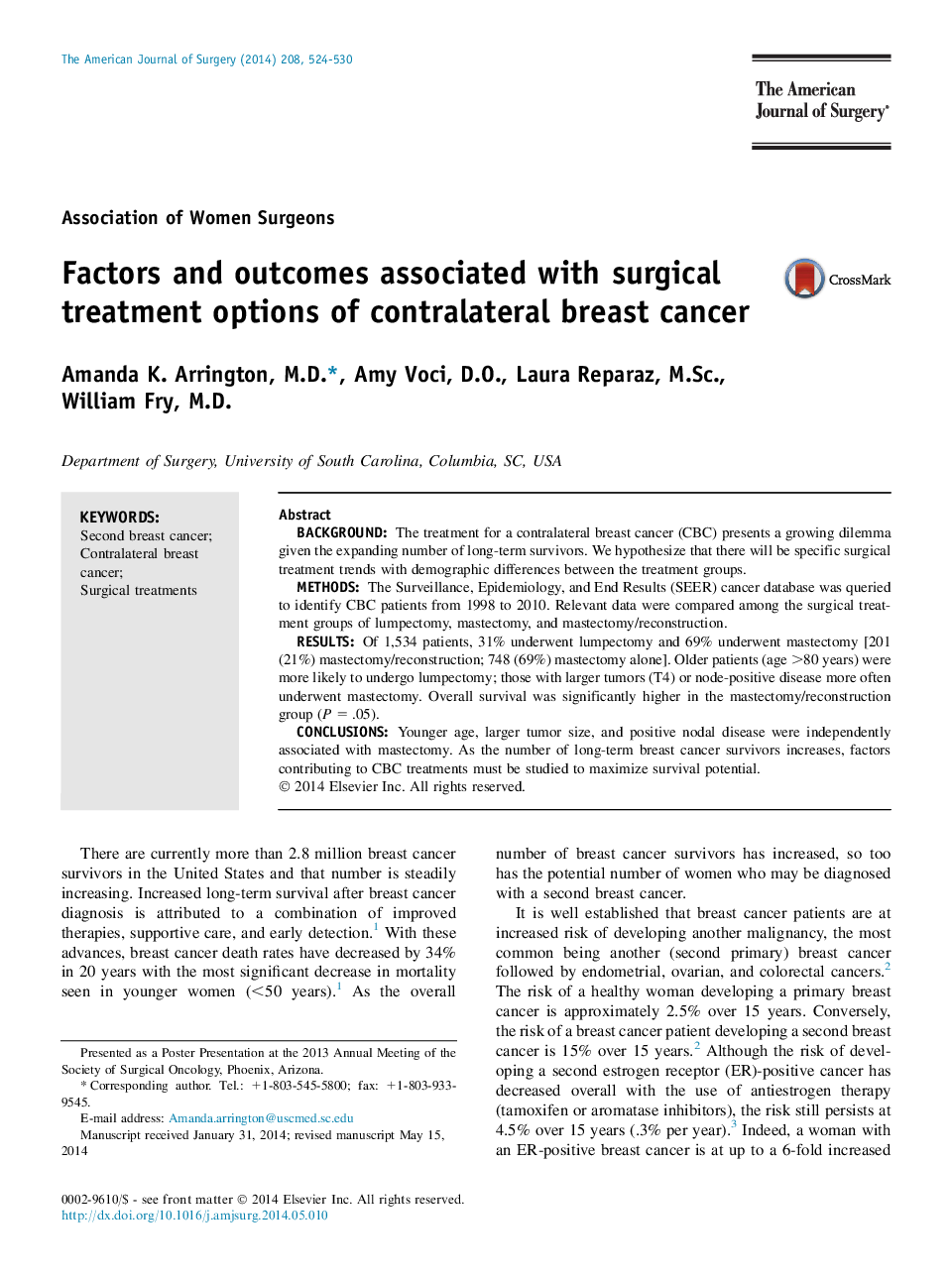| Article ID | Journal | Published Year | Pages | File Type |
|---|---|---|---|---|
| 4278953 | The American Journal of Surgery | 2014 | 7 Pages |
BackgroundThe treatment for a contralateral breast cancer (CBC) presents a growing dilemma given the expanding number of long-term survivors. We hypothesize that there will be specific surgical treatment trends with demographic differences between the treatment groups.MethodsThe Surveillance, Epidemiology, and End Results (SEER) cancer database was queried to identify CBC patients from 1998 to 2010. Relevant data were compared among the surgical treatment groups of lumpectomy, mastectomy, and mastectomy/reconstruction.ResultsOf 1,534 patients, 31% underwent lumpectomy and 69% underwent mastectomy [201 (21%) mastectomy/reconstruction; 748 (69%) mastectomy alone]. Older patients (age >80 years) were more likely to undergo lumpectomy; those with larger tumors (T4) or node-positive disease more often underwent mastectomy. Overall survival was significantly higher in the mastectomy/reconstruction group (P = .05).ConclusionsYounger age, larger tumor size, and positive nodal disease were independently associated with mastectomy. As the number of long-term breast cancer survivors increases, factors contributing to CBC treatments must be studied to maximize survival potential.
